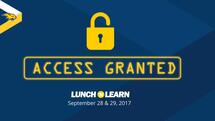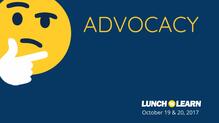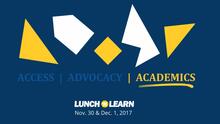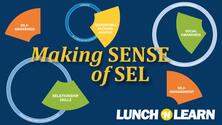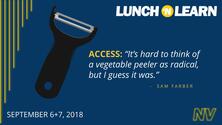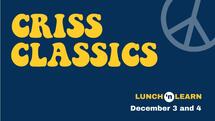FACULTY Handbook
The purpose of The Faculty Handbook is to connect the needs of students with consistent professional practices. It aligns with the District Strategic Plan, the Portrait of a Graduate, the Board of Education Equity Statement, and the mission of Neuqua Valley High School.
These consistent professional practices are fundamentally rooted in three things:
These consistent professional practices are fundamentally rooted in three things:
ACCESS | ADVOCACY | ACADEMICS
ACCESS to Obligations and Opportunities
Intentionally opening doors to relationships and responsibilities, academic habits and opportunities for student development.
ADVOCACY for Themselves and Others
Feel capable of recognizing struggle, acknowledging a need for help - and to do the same for others.
ACADEMIC Skills that Cross Curricular and Content Boundaries
Providing students core academic skills that will serve them in any academic, college or career environment.
Intentionally opening doors to relationships and responsibilities, academic habits and opportunities for student development.
ADVOCACY for Themselves and Others
Feel capable of recognizing struggle, acknowledging a need for help - and to do the same for others.
ACADEMIC Skills that Cross Curricular and Content Boundaries
Providing students core academic skills that will serve them in any academic, college or career environment.
- Toolkit for Text
- V is for Vocabulary
- Teaching the Triangle
- Art of Argument
- Made to Measure
Some students are not always ready to contribute as students as we are as Faculty. We must move past 50/50 - "Meet Me Halfway" - for the ones who need us most. They need us in a more intentional way.
This begins with RELATIONSHIPS. Investing the time in students who we know need it more than others. Those relationships, built personally and instructionally, have three components:
This begins with RELATIONSHIPS. Investing the time in students who we know need it more than others. Those relationships, built personally and instructionally, have three components:
AuthenticAuthentic relationships connect the teacher, student, and the content or purpose. When we help connect students with ideas and skills they find relevant and meaningful, that is authenticity. This deepens strong relationships.
|
InclusiveInclusive relationships ensure all students feel safe and connected. Some need a greater portion of our attention than others. Inclusive means building relationships with all students, especially those who need it most.
|
EmpoweringEmpowering relationships provide students with an opportunity for voice and choice when it comes to their learning. When students feel ownership, they are more willing to learn, take risks, and persevere.
|
Core Academic Skills for ALL Students
TOOLKIT FOR TEXTLiteracy is the single greatest lever for academic success - regardless of course or content. Text needs to be on the table as we build prediction, summary and inferencing skills.
★ KNOW - Why is this important? As adults, you have a Toolkit for Text: Strategies you subconsciously use to understand what you read. Your toolkit for text is filled with the methods and materials that help you comprehend, even when you might not have all the vocabulary and previous knowledge. You have habits, built over years of experience as a reader, that you employ to help you know and grow. We need to help students build their own toolkit for text. This opens the gateway to making sense of new information and growing their ability to do something with it. ★ SAY - What are verbal cues you can use in your classroom? Students need direct verbal cues from you to focus them on the skill and concept.
★ DO - What are strategies that work in every subject, for every learner? Work with students who have text in their hand in your room. Reading is not just a homework activity. Before Reading: Predictions - Given a title, image or short text selection - What is this going to be about? During Reading: Summaries - This is not just an end-of-reading strategy. Stop and do this periodically out loud as students read. This can be done individually or in partner reading groups. After Reading: Inferences - What is the deeper meaning, beyond plot, facts or surface knowledge? |
V IS FOR VOCABULARYWithout a foundation for the words that create meaning in your content, students are locked out of learning. The key is to be clear and intentional with those words.
★ KNOW - Why is this important? Students who have not been in an environment where vocabulary is routinely taught are nearly 6,500 words short of their peers by Junior year. If we want students to be literate in our content areas, they must have the ability to use the right words at the right times. We often assume they know the words that are so familiar to us. Start with the assumption that they don’t. ★ SAY - What are verbal cues you can use in your classroom? Students need direct verbal cues from you to focus them on the skill and concept.
★ DO - What are strategies that work in every subject, for every learner?
|
TEACHING THE TRIANGLEStudents have to navigate more information than any other generation. We need to help them make sense of it by helping them decode various forms of detail.
★ KNOW - Why is this important? Putting together different pieces of information - such as text, graphics, data - is a Bermuda Triangle for students. When students “don’t know” something, many times it is not a matter of not knowing the content, but not having the skill to put an answer together. Working through a process, even when the parts of the process are understood individually, can be difficult when they are combined. ★ SAY - What are verbal cues you can use in your classroom? Students need direct verbal cues from you to focus them on the skill and concept.
★ DO - What are strategies that work in every subject, for every learner? Be explicit on how to “read” artifacts in your content area. For example, how do you help students use a title, legend, axis labels and other terms to start “reading” a graph? Use a variety of modalities: Reading, speaking, writing - individually, in pairs, and the whole class. Ask students to make connections between different pieces of information whenever you can. |
ART OF ARGUMENTEvidence is at the heart of a good argument. This means providing students opportunities to navigate perspective and point of view. ★ KNOW - Why is this important? Students want to live in a world of persuasion - think click-bait - but need to be skilled at argument. Argument is the art of supporting your opinion with facts and evidence, not just preference. Building an argument is a sophisticated skill, yet when done right is a clear sign a student has reached understanding. ★ SAY - What are verbal cues you can use in your classroom? Students need direct verbal cues from you to focus them on the skill and concept.
★ DO - What are strategies that work in every subject, for every learner? Build student understanding of Claim, Evidence and Warrant.
|
MADE TO MEASUREBy revisiting essential skills at intervals throughout the year, students can see growth and better understand it.
★ KNOW - Why is this important? We should always be mindful of progress - not just attainment. Where are they on their journey? Effective teaching and learning are rooted in feedback. Feedback can close the gap between where your students are and where you want them to be. Anecdotes, artifacts and assessments each provide rich opportunities to provide students feedback. That feedback helps arm students to improve their next effort. That is the definition of learning. ★ SAY - What are verbal cues you can use in your classroom? Students need direct verbal cues from you to focus them on the skill and concept.
★ DO - What are strategies for work in every subject, for every learner? Make time to use student work as learning examples, not just records for the gradebook. Models should not just be perfect examples, but examples from which students can think about strengths and weaknesses. Keep student samples of work and put them back in students’ hands later. This is particularly helpful when students can re-read your feedback just prior to another effort. This means you might pass back graded work to students - and then re-collect it so that feedback is saved, not buried in a backpack or trash bin. |
Student COMMUNICATIONSBoth Google Classroom and the StudentVUE Gradebook are essentials ways in which we communicate with students.
The more consistently we communicate, the more likely we give students a chance to succeed. Below, two documents that outline expectations and best practices related to these 2 tools. |
Academic Habits
- Time management & organization
- Engagement and participation
- Working collaboratively in groups
- Note taking and annotation
- Study habits and preparation
- Advocating in-person
RELATIONSHIPS
|
When classrooms become communities, they thrive. It takes intentional work to create a sense of belonging for each student. This is equity in action.
|
This is no mystery, and it is something we do well. We will always have room to grow when it comes to students who struggle with their own relationships.
Creating community within a classroom builds trust. When conflict or disagreement arise - and we know it can and will - we all want a foundation of trust that gives both sides the connection and strength to reflect and recover. How can we embed and extend relationship work beyond the introductions we do to start the year? How do we plan each week to take time to build relationships and connections? Consistency is key. The elephant in the room: TIME. We control it more than we think. We often surrender it to things that we think are beyond our control, like curriculum. Yet, we know if we prioritize something, students will sense that and respond. |
PROFESSIONAL TIME
Just as we can use more with our students, we need more with each other. More time for sharing, more time for dialogue, more time to develop and experiment with new ideas.
Lunch n' LearnsWe will be experimenting with slightly different formats that reflect the feedback from faculty and Chairs. Look for a Lunch n’ Learn BLOCK in September and Lunch ‘n Learn Unplugged in October.
|
Target TeamsThroughout the year, we will be releasing course teams so they can collaborate on professional goals that they define. This can include cross-curricular work and skill-focused goals.
|
Peer ObservationsWe will be creating some time to incentivize going and watching a peer teach. You have shared that doing so is empowering and rewarding.
|
RESOURCES
During the last several years, Lunch 'n Learns have focused on building healthy academic habits with our students.
Click on each image to revisit these resources.
Click on each image to revisit these resources.
|
Teachers need to help students "unlock" the barriers that deter them from accessing and utilizing various resources. Explicit instruction and effective modeling can help students find success in the classroom.
|
Students need to be prompted and given opportunities to reflect on their strengths and weaknesses. This, paired with time and a safe place to ask questions, allows students the chance to seek the support they need.
|
Our Toolkit for Text provides a clear path for how to help students engage with text in the classroom. Opportunities to comprehend, synthesize, create arguments, and reflect are an essential part of this process.
|
|
SEL can be tricky to address in the classroom; however, developing relationships with our students and providing opportunities for them to connect with their peers will increase engagement in the classroom. Once they are invested, their effort and ownership will increase.
|
Small shifts in instructional practices can lead to radical results. Students need access and coaching as they learn how to organize, plan, and process. Graphic organizers and daily reminders about how to utilize resources will go a long way when modeling these strategies for our students.
|
CRISS is an oldie but goodie that puts student ownership at the core of effective teaching and learning. Giving students time to discuss, share, write, and organize helps engage them in the learning process. Once engaged, learning and ownership will follow. Dust off those old CRISS books...
|







